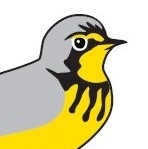By Kerrie Wilcox, Project FeederWatch Coordinator, Bird Studies Canada
Thanks to all the Great Backyard Bird Count participants from this year and past years! The information provides an historic snapshot into world bird populations. If you weren’t able to participate this year, or if you did and are looking for more ways to help, check out other Citizen Science opportunities coming up and mark your calendar for Feb.14-17, 2020 – the 23rd Great Backyard Bird Count.
2019 was another record breaking year for the Great Backyard Bird Count. As of March 22nd, 205,779 checklists had been submitted from around the world. This report reflects the current results but numbers may change as checklists continue to be submitted.

Gray Partridges Photo: V. Mann
Highlights:
Participants in 177 countries around the globe recorded over 6700 species.
Canada recorded 241 species and made a stellar contribution with 14,620+ checklists!
Top participating countries:
United States – 121, 200+ checklists
India – 22,240+ checklists
Canada – 14,620+ checklists
Australia – 2300+ checklists
Spain – 1910+ checklists
Ranked by the number of bird species observed, Colombia came out on top with 1103 species. Ecuador followed with 965 species, then India with 852, Brazil with 846, and Mexico with 760.

Pine Grosbeak Photo: Maggie Leary
Here in Canada, higher-than-average numbers of Evening Grosbeaks, Pine Grosbeaks, and Common Redpolls were detected in eastern Canada, delighting birders in Ontario, Québec, and the Maritime Provinces.
While there was a definite lack of winter finches reported in Prairie Provinces this year, there were two surprising water bird rarities given the harsh winter weather – an American White Pelican and a Double-crested Cormorant.
In the west, a Dusky Thrush that was discovered on January 19 near the Nanaimo River Estuary (southern portion of Vancouver Island) stayed around long enough to be counted on the first day of the GBBC, February 15. This species is common in Siberia and occurs casually in Alaska during spring migration.
Check out the GBBC 2019 Summary for more details!
You can also use the “Explore a Region” tool to see the numbers of checklists and species reported in your province or county, or to view maps of species distributions. And don’t miss the fantastic images from the count on the photo contest page.
Thank you to everyone who participated in the 2019 Bird Studies Canada Great Backyard Bird Count Story Contest. Congratulations to Sally Gati, who was awarded first place by our judges for the story “My Great Backyard.” Sally will receive a Bird Studies Canada membership and a National Geographic field guide!
The GBBC is a joint project of the Cornell Lab of Ornithology and the National Audubon Society with partner Bird Studies Canada, and is supported in Canada by Wild Birds Unlimited.
If you enjoyed the Great Backyard Bird Count and are interested in more Citizen Science activities to pursue at other times of year, you might want to consider the Canadian Lakes Loon Survey. It involves a modest time investment from June to August, and is a great way to appreciate and help loons on any lake in Canada. To learn more or register, please contact Kathy Jones (volunteer@birdscanada.org).

